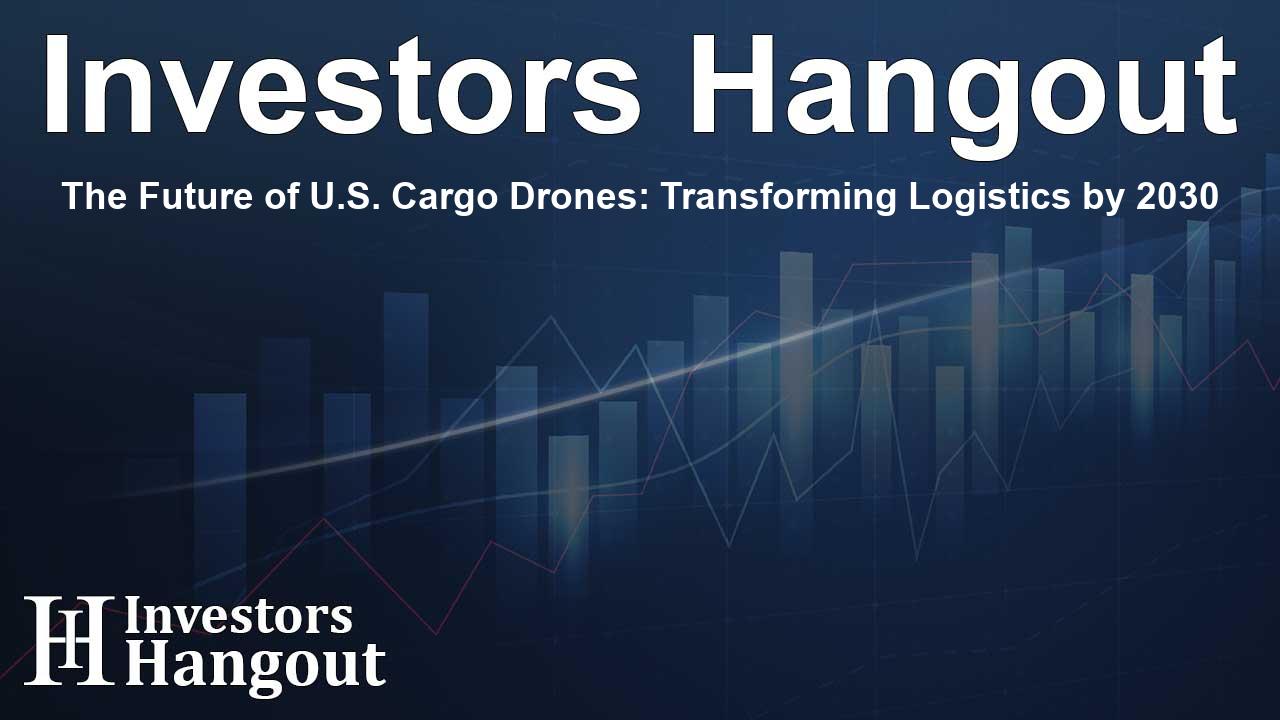The Future of U.S. Cargo Drones: Transforming Logistics by 2030

Market Overview and Growth Forecast for Cargo Drones
The U.S. cargo drones market is on a remarkable trajectory, with projections suggesting it will reach USD 3,275.1 million by 2030, rising substantially from an estimated USD 762.8 million in 2024. This impressive growth reflects a compound annual growth rate (CAGR) of 27.5%. The driving forces behind this expansion include significant investments, groundbreaking technological advancements, and a supportive regulatory environment.
Driving Forces Behind Market Expansion
A critical factor energizing the U.S. cargo drones market is the Federal Aviation Administration's (FAA) authorization for commercial drones to operate within U.S. airspace. This opens doors for companies to innovate and deploy delivery solutions that enhance logistics. Notable industry players, including Boeing and other established firms, are pioneering the technological developments that fuel market growth.
Innovations Shaping the Future
Innovative startups are at the forefront of transforming logistics, introducing novel delivery methodologies that integrate automation. As these companies implement advanced delivery operations, they significantly enhance efficiency and service delivery in various sectors, positioning cargo drones as crucial assets in modern logistics.
Key Players in the Industry
The landscape of the cargo drones market is populated by industry leaders such as Boeing, Bell Textron Inc., Kaman Corporation, and other emerging players like Natilus and Elroy Air. These companies are not just competing but are also collaborating to innovate and optimize drone technology for diverse applications.
Understanding Market Segmentation
When it comes to applications, the civil segment dominates the market. Cargo drones are increasingly utilized in various sectors, including retail, healthcare, agriculture, and maritime, where they provide efficient and rapid delivery of essential goods. For instance, drones are instrumental in healthcare, enhancing emergency response by delivering urgent medical supplies swiftly, particularly to remote or disaster-affected areas.
The Role of Drones in Agriculture and Retail
In agriculture, drones streamline the movement of inputs, ensuring timely delivery of seeds, fertilizers, and pesticides, thereby boosting operational efficiency for farmers. In retail, the use of drones for last-mile delivery is gaining momentum, allowing e-commerce businesses to improve their logistics and service efficiency while meeting rising consumer demands.
Payload and Range Considerations
The cargo drones market sees varied segmentation by payload capacities, with those exceeding 1000 Kg expected to experience the most significant growth. This surge is driven by an increasing demand for heavy-lift logistics, particularly in remote and challenging environments where large quantities of goods need to be delivered efficiently.
The market is also segmented by range, with close-range drones (<50 Km) leading the charge. Their design is tailored for local deliveries, and they're ideal for transporting time-sensitive products such as food and pharmaceutical goods, especially in urban settings where traditional delivery methods may be hindered by traffic congestion.
Regional Insights: North America at the Forefront
North America is anticipated to hold the largest share in the global cargo drones market, bolstered by substantial investments and technological advancements. A combination of established industry players, innovative startups, and a robust regulatory framework set the stage for ongoing growth in this region.
Challenges and Opportunities Ahead
While the cargo drones market is on a positive trajectory, certain challenges persist, including a shortage of qualified drone operators and issues related to cybersecurity. However, there is immense opportunity in utilizing cargo drones for middle-mile logistics, potentially revolutionizing transportation and distribution strategies.
Infrastructure Needs for Future Growth
Addressing existing infrastructure complexities and developing effective unmanned traffic management systems will be pivotal to unlocking the full potential of the cargo drones market. As companies navigate these challenges, continued innovation and regulatory adjustments will play significant roles in shaping the future of aerial logistics.
Frequently Asked Questions
What are the key drivers of growth in the U.S. cargo drones market?
The main drivers include regulatory support, significant investments in technology, and innovations from both established companies and startups.
How are cargo drones used in the healthcare sector?
They facilitate the rapid delivery of vital medical supplies, including vaccines and organs, especially in remote or emergency situations.
What payload categories dominate the cargo drones market?
Payloads over 1000 Kg are projected to experience the highest growth, driven by the demand for heavy-lift logistics.
How does the U.S. market compare to global trends?
North America leads the global cargo drones market, thanks to high investment levels and advanced technology compared to other regions.
What challenges does the cargo drones market face?
Challenges include a shortage of skilled operators, cybersecurity concerns, and the need for improved infrastructure.
About The Author
Contact Ryan Hughes privately here. Or send an email with ATTN: Ryan Hughes as the subject to contact@investorshangout.com.
About Investors Hangout
Investors Hangout is a leading online stock forum for financial discussion and learning, offering a wide range of free tools and resources. It draws in traders of all levels, who exchange market knowledge, investigate trading tactics, and keep an eye on industry developments in real time. Featuring financial articles, stock message boards, quotes, charts, company profiles, and live news updates. Through cooperative learning and a wealth of informational resources, it helps users from novices creating their first portfolios to experts honing their techniques. Join Investors Hangout today: https://investorshangout.com/
The content of this article is based on factual, publicly available information and does not represent legal, financial, or investment advice. Investors Hangout does not offer financial advice, and the author is not a licensed financial advisor. Consult a qualified advisor before making any financial or investment decisions based on this article. This article should not be considered advice to purchase, sell, or hold any securities or other investments. If any of the material provided here is inaccurate, please contact us for corrections.
